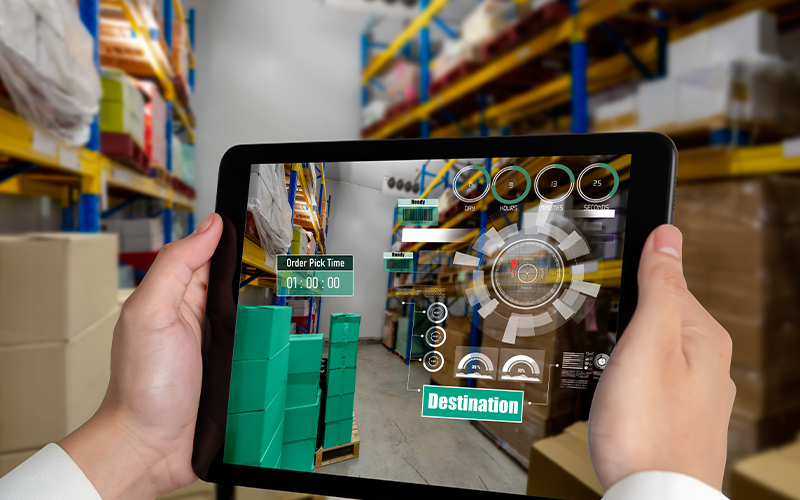The Consumer Packaged Goods (CPG) market has become highly competitive with several players offering a variety of products. In recent years, there has been a lot of emphasis on managing trade promotions in the industry because of the numerous challenges it faces. For example, not only do customers have more choices, but they also expect personalised experiences.
Trade Promotion Management (TPM) and Trade Promotion Optimisation (TPO) strategies have revolutionised the way companies plan, execute and analyse promotional activities.
What is Trade Promotion Management (TPM) and Trade Promotion Optimization (TPO)?
Trade promotion and optimisation refers to the process of planning, executing, and analysing promotional activities using advanced analytics. The purpose of TPO is to maximise return on investment (ROI) by developing strategies and tools to effectively manage trade promotions. This is a critical aspect of trade promotion management in CPG, where understanding consumer behavior and market trends is key to success.
TPO is relevant to CPG companies because it helps drive sales, boost profitability, strengthen trade relationships, manage complexity and gain a competitive advantage in the highly competitive consumer goods industry.
How do trade promotion operations work?
Here is a typical list of steps in the optimization process for trade promotions:
Step 1: Data collection
As a first step, relevant data is collected from various sources, such as historical sales data, promotional activities and performance, pricing information, market data and consumer insights. This data is typically obtained from internal sales and marketing systems, point-of-sale (POS) systems and external market research sources to support the promotion plan.
Step 2: Data analysis
Next, data is analysed to identify patterns, trends and relationships between various variables. This analysis may include statistical techniques, data mining and predictive modelling. The analysis provides insights into the impact of different promotional activities on sales and profitability.
Step 3: Optimisation
Optimisation entails identifying the right products, pricing strategies, promotional tactics, timing and distribution channels to maximise sales and profitability through effective trade promotion planning. Optimised plans focus on finding the right balance between promotional spend and ROI through scenario planning.
Step 4: Simulation and scenario analysis
Manufacturers and retailers simulate different promotional scenarios and evaluate their impact on sales and profitability. They can test different strategies, forecast potential outcomes and make data-based decisions about effective promotional strategies, among other possibilities.
Step 5: Execution and monitoring
During the execution phase, the performance of promotions is tracked and their impact on sales and profitability is measured.
Step 6: Evaluation and adjustment
The final outcomes are assessed and compared with the initial objectives and forecasted results. This helps to identify areas of improvement and make the required refinements for future promotions.
Data Analytics and AI at the Heart of the TPO Process
It is evident that the crux of the TPO process is data. In fact, big data lays the foundation of TPO. Artificial Intelligence (AI) gathers data from multiple sources and analyses the data to provide insights for optimising trade promotion strategies. Machine Learning (ML) algorithms make predictions based on the existing data patterns. The availability of real-time data enables marketers to make effective decisions in a timely manner. Armed with all these inputs, marketers can optimise trade promotions to get the desired results.
TPO depends on multiple factors and requires in-depth knowledge of relevant digital technologies. However, organisations find it difficult to navigate some of the complexities of the TPO process like fragmented data sources, ambiguous responsibility matrices, etc. According to a Strategy& survey, 85% of CPG companies often find themselves struggling with ineffective trade management and overspending, highlighting the need for better optimization processes. Even after investing significant amounts in TPM, they are unable to optimize trade spend and maximise their ROI.
This is where trade promotion management services can play a role in enhancing decision-making through data science. TPM experts help optimise trade promotion operations based on objectives, metrics and best practices. They define and achieve measurable business results through predictive analytics.
Why Do You Need Trade Promotion Management Services for Your CPG Business?
- They facilitate effective planning and execution of promotional campaigns. This includes setting objectives, identifying target markets, designing promotional strategies, creating compelling content, managing timelines, and integrating tpo solutions for much more effective campaigns.
- These services enable businesses to track and analyse the effectiveness of promotional campaigns. They can identify what works and what does not, by leveraging historical data and make data-driven decisions to optimise future promotions.
- By outsourcing TPM services, businesses can save costs associated with hiring and training in-house staff while leveraging advanced tpo software.
- Businesses benefit from the service provider's expertise and resources, which may result in better cost management and efficiency through the optimization process.
- They help businesses drive sales and increase profitability by effectively optimising promotional activities and targeting the right audience.
- TPM services can help businesses stand out from their competition by creating impactful promotional campaigns that grab the attention of consumers and differentiate their brand in the market.
- Trade promotion management services enable businesses to create relevant and valuable promotions that align with the interests and preferences of their customers. These personalised and targeted promotional offers boost the customer experience.
Conclusion: Optimizing Trade Promotions for the Future of the CPG Industry
In a rapidly evolving market, where competition is fierce, the adoption of trade promotion management and optimisation is imperative for CPG companies to stay ahead and succeed in today's challenging business landscape.
How can Infosys BPM help?
Infosys BPM offers Trade Promotion Management Services that help CPG companies identify and achieve the objectives of an ideal TPM model. We provide comprehensive TPM services that include Business Process Consulting, Managed Trade Promotions, Technology Consulting and Implementation Services, Analytics Advisory and Data Consulting. Our services will improve the efficacy of your TPO processes and enhance customer experience.








